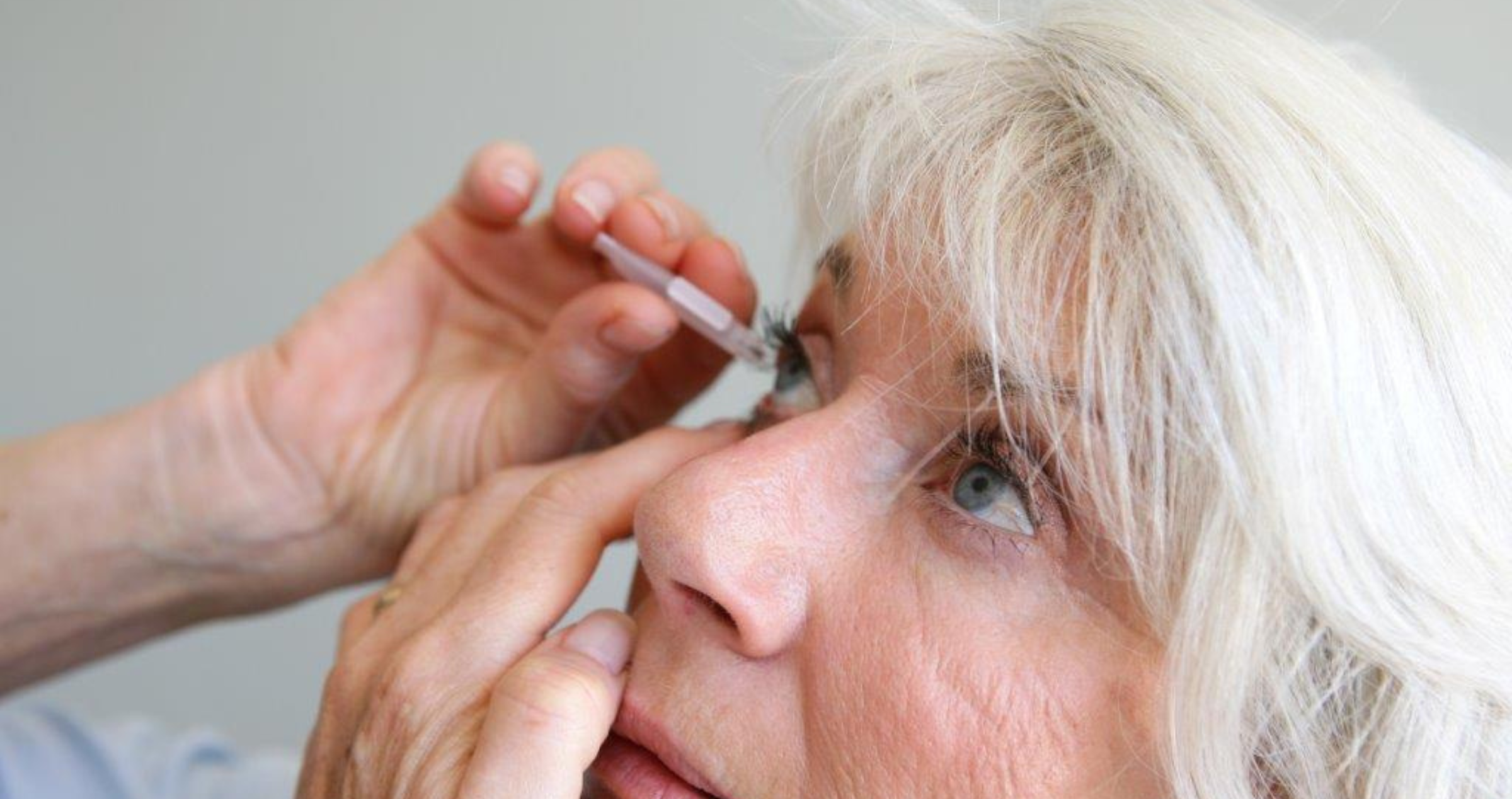Share
Navigating the do’s and don’ts of glaucoma eye drops can often be a challenge for people living with glaucoma and in particular, for those recently diagnosed. However, there are a number of simple things that you can do to easily navigate this process and ensure that your eye drops are instilled both safely and effectively.

Set a reminder
To assist with treatment adherence, it’s a good idea to set a reminder on either your phone or calendar to remind yourself to use your eye drops at the same time every day. Some pharmacies also offer medication management apps or SMS reminder services, so it is worth enquiring with your local pharmacist to see whether they offer this service.
Check the expiry date on your eye drops
Checking the expiry date of your eye drops is important as most only last 28 days. If you are unsure, the expiry date is usually printed on the box or on the bottle itself. If your drops are beyond their expiry date, you should refrain from using them.
Check the validity of your prescription
It is important also to check the validity of your eye drop prescriptions. Most prescriptions will legally be valid for about 12 months from the date that they are originally prescribed.
Attend regular appointments
Attending regular appointments with your doctor, optometrist or ophthalmologist is central to ensuring effective glaucoma treatment. Every six months is usually a good time to be reviewed by your eye health professional – if you haven’t already been advised otherwise.
Keep a diary of your symptoms
Keeping either a personal log or record and noting down any changes you may experience (either small or large) provides a useful reference for both yourself and your ophthalmologist or optometrist. This will be particularly helpful for your eye health professional when attending appointments so they can effectively monitor your progress and also assess whether any changes are required to be made to your treatment plan.
Storage requirements
Checking the storage requirements of your eye drops is an important (and sometimes easily forgotten) step in ensuring your drops maintain their shelf life. Sometimes your eye drops may be refrigerated at the pharmacy but once you take them home, you can store them in a cool dry area outside of the fridge.
Another reason why you don't need to store them in the fridge is because if your eye drops are too cold, they can sometimes sting and irritate your eyes. And so, if you're going to store eye drops in the fridge (as is required by some storage requirements) it is recommended that you remove them from the fridge for a few minutes before instilling, to ensure you have a much more comfortable experience.
Travel
Making sure you use your eye drops whilst travelling can always be a bit of a challenge so it is recommended that you purchase a cooling pouch to ensure you can easily transport your drops with you on your travels. If you accidentally miss any doses while you’re travelling, it is important not to double up on your eye drops. Rather, when you remember to use them next, just instil them as prescribed and don't worry about the missed dose.
You should also never use more than the prescribed dose, as the occasional missed dose is unlikely to be harmful. If you do however continue to miss regular doses, it is a good idea to use some sort of personal reminder to maintain treatment compliance.
Wash your hands
It is always important to ensure you wash and dry your hands thoroughly before handling your eye drops. Using hand sanitiser beforehand however is not recommended because if you do accidently rub your eyes, it may sting and cause further irritation. For that reason, it is best to simply use traditional soap and water.
Tips for instilling your eye drops
By following the steps set out below, correctly instilling your eye drops can be a simple and stress-free process.
Firstly, you want to aim the bottle towards the eye. In doing so, you want to make sure you don’t touch the eye itself or any other surface to avoid any cross contamination. If you don’t however have a steady hand, you can always ask someone within your household to help instil your eye drops – making sure they also have clean hands.
Once you have the bottle aimed towards your eye, tilt your head back slightly and look upwards. Then, with the other hand, pull your lower eyelid down so that you can make a pocket for the eye drops to be inserted.
With the other hand, hold the eye drop bottle carefully upside down and gently squeeze the bottle to release a drop. Make sure to only squeeze one drop at a time and continue to squeeze the number of prescribed drops into the pocket only.
After instilling your drops, close your eyes gently and using your index finger, press against the corner of your eyes. This will ensure the medication has time to absorb.
Contact Lenses and eye drops
If you are a contact lens wearer, it is important to always remove your lenses before you insert any eye drops. You should then wait about 15 minutes before you insert them again. The only time you should wear your contact lenses when putting in eye drops is if you're using a lubricant to refresh your eyes from dry eye.
Eye Drop Aids
Eye drop dispensers are a great option if you struggle with instilling your eye drops yourself. Glaucoma Australia offer a range of eye drop aids on their website and if you are unsure, you can always get in touch with one of Glaucoma Australia’s clinical educators. They will be able to help you to decide which option is best for you.
Separate your drops
If you happen to use multiple eye drops (which is not unusual for someone who has glaucoma), it is generally recommended that you separate them by about 3 to 5 minutes. It is however always recommended that you seek the advice of your ophthalmologist or eye health professional on what the correct waiting time should be.
Generic brands vs original brands
Quite often when visiting your pharmacy, you will be asked whether you would like the generic brand of your eye drops. It is not unusual however to wonder whether the generic brand of your eye drops will do the same as the original brand.
The generic brand is usually known by the drug name or the active ingredient that is in it. It usually has had bio-equivalence tests done in order to show that it's bio-equivalent or that it has the same effect as the original brand.
With the original brand, usually you'll know this as the branded name. This is marketed by the pharmaceutical company and there is usually a patent to protect this brand for several years. This allows the original company who produced it to recuperate any costs.
Original brands are also usually a little bit more expensive than your generic brands – and so, the generic version is usually available as a cheaper alternative.
Click here to watch the full version of Khanh Nguyen’s Live YouTube Q&A with Glaucoma Australia.
For more information about eye drops, visit our FAQ page.



